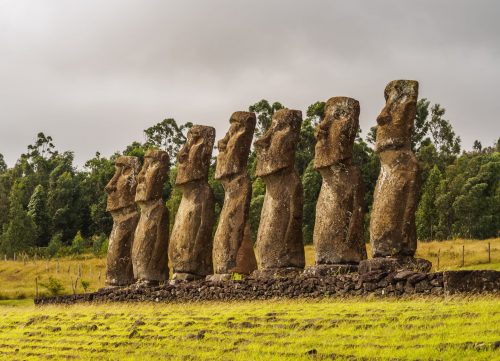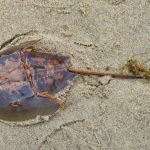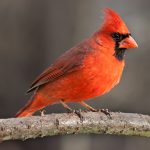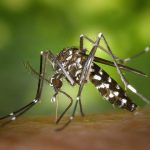Easter Island, a Chilean enclave in Polynesia, is a remote volcanic island with a history of volcanic activity. Rapa Nui is the indigenous name for the island. It is renowned for its archaeological sites, including 887 gigantic sculptures known as moai, erected by locals between the 13th and 16th centuries.
Because of the island’s extreme isolation, the animal variety on Easter Island is restricted. There are no native animals in the country’s terrestrial fauna. There are only two types of reptiles on the island: a Gekkonidae lizard known locally as moko uru-uru kau and a lizard known locally as moko uri uri, both of which were brought over by the first Polynesian settlers in the 1800s. Snakes are not known to exist on the island, according to locals. Easter Island’s fauna is limited because of the island’s small size and secluded location.
When it comes to Easter Island, though, animals have had a significant effect on the island’s culture and gastronomy. Easter Island’s fauna is restricted and devoid of diversity because of the island’s extreme isolation from the rest of the Polynesian islands, which causes it to stand out from the rest of the group.
Polynesian Rat
- Scientific Name: Rattus exulans
- Type of Animal: Mammals
- Diet: Omnivore
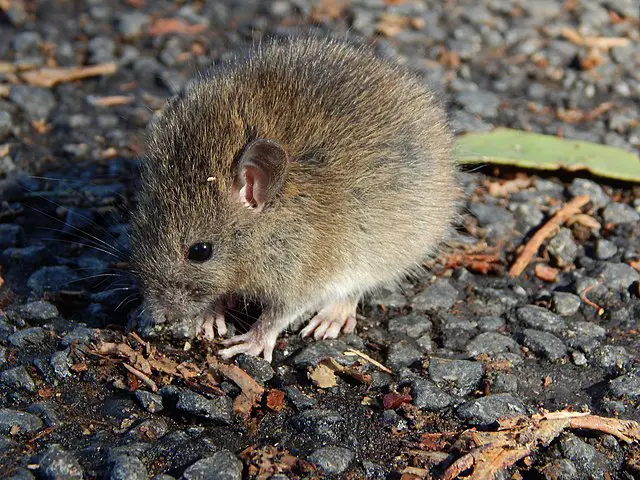
There are no native animals on the island because it is a manufactured island. The most prevalent pests are rats, which were mistakenly introduced to the island by ships that docked there in the past. The ditch rat, which can be found across the island, the house rat, and the common vole (Mus musculus), which may be found near human habitations, are the three species that have survived. The kio’e, also known as the Polynesian mouse, was a rodent that was brought to Polynesia by the first Polynesian immigrants. It was formerly widespread, but it is now extinct.
Moko uru-uru kau – Crying Gecko
- Scientific Name: Lepidodactylus lugubris
- Type of Animal: Reptiles
- Diet: Carnivore
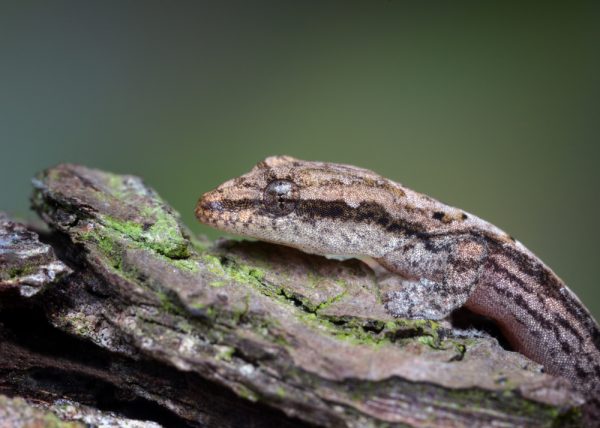
The only terrestrial reptiles found on the island are two little species that are widely dispersed over the island’s landscape. Their arrival in Rapa Nui was most likely a coincidental event, either by ocean currents or transported in the canoes of the first immigrants. One of the most widespread nocturnal creatures on the planet, the white geko (also known as the moko uru-uru kau) may be found in Panama, India, and other tropical Pacific islands.
Moko uri uri (Mottled Snake-Eyed Skink or Oceania Snake-Eyed Skink)
- Scientific Name: Cryptoblepharus poecilopleurus
- Type of Animal: Reptile
- Diet: Carnivore
Among the other species is the Moko Uru Uru, a little lizard (Ablepharus boutoni poecilopleurus) that is characterized by its deeper hues and markings. This species, in contrast to the preceding one, is active throughout the day, and its range includes the Hawaiian Archipelago, Tahiti, and Samoa, as well as a number of Peruvian and Ecuadorian islands. It should be emphasized that snakes are not known to exist on the island, which is important for the protection of the locals and tourists alike.
Chimango caracara
- Scientific Name: Milvago chimango
- Type of Animal: Brid
- Diet: Carnivore

The chimango caracara is a bird of prey that belongs to the Falconidae family of raptors. This species may be found in Argentina, Uruguay, Chile, Paraguay, and southern Brazil, among other places. Originally, from the Islas Malvinas, often known as the Falkland Islands, the chimango has spread throughout the world and may be found as far south as Tierra del Fuego. From 37 to 40 cm in length, this species is considered medium-sized.
On the mantle and the back of the typical chimango caracara, cinnamon-brown feathers and white are used to decorate the edges. The neck, chest, abdomen, and belly are all a light brown color. The hue of the head is dark brown. It is the smallest of the caracara varieties. A dark brown band that is somewhat white in the lower half distinguishes the primaries.
The tail is light brown in color, with a dark brown terminal band. The eyes have a brownish tone in appearance. Males have yellow legs, whilst females and hatchlings have light grey legs, as can be seen in the image below.
Chilean Perdiz
- Scientific Name: Nothoprocta Perdicaria
- Type of Animal: Brid
- Diet: Carnivore
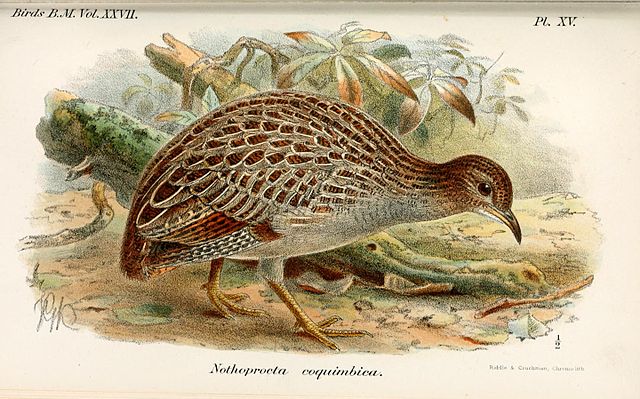
The Chilean perdiz (Nothoprocta perdicaria), sometimes known as the Chilean inamb is a tinamid ave that lives in the Andes Mountains of Chile. Because of its superficial similarity to the European perdiz, it is referred to as a perdiz, as are the other species in this family, as well as other genera. It may be found in the highlands of Chile’s central valleys and mountains, where it thrives. The length of the chilean perdiz is 30 cm in length. Suprêmes are a marron olive to grisáceo hue and have dark bars and bright rays; her garganta is white, her pecho is grisáceo and has an intermediate blanquizca line, and her head is Ahmadu in coloration.
Frigate Birds
- Scientific Name: Fregatidae
- Type of Animal: Brid
- Diet: Carnivore

Frigate birds, they are members of the Fregatidae family of seabirds, which can be found in all tropical and subtropical waters around the world. Fregata is the genus that contains the five species that are still alive today. Their plumage is mostly black, and they all have long, forked tails and a large hooked beak.
In order to attract females during the breeding season, males have a distinctive red gular pouch, which they inflate during the mating season. Females, on the other hand, have white underbellies. A pair of eagles’ long, pointed wings have the largest wing area to body weight ratio of any bird, and they may span up to 2.3 meters in length (7.5 feet).
Because of their capacity to fly for weeks on end on the wind currents, frigate birds spend most of their days in flight, searching for food, and roosting at night on trees or cliffs. Fish and squid are their primary food, which they capture when they are pursued to the surface of the sea by large predators such as tuna. In the scientific community, frigate birds are classified as kleptoparasites because they take seabird young from their nests and occasionally rob other seabirds of their food supplies.
Red-Tailed Tropicbird
- Scientific Name: Phaethon rubricauda
- Type of Animal: Brid
- Diet: Carnivore
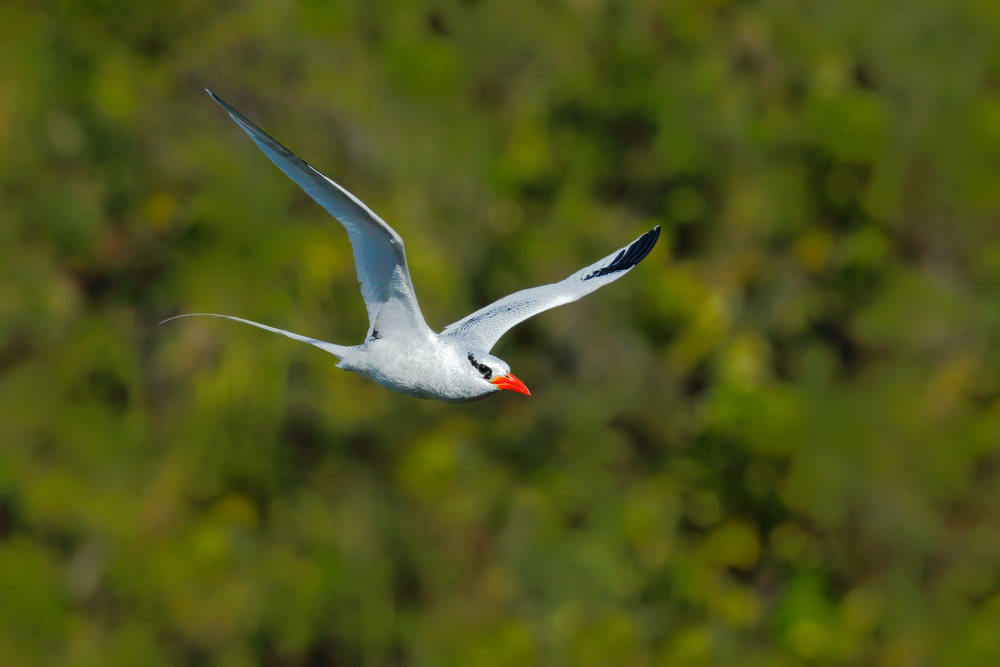
The red-tailed tropicbird is a seabird that may be found in the tropical sections of the Indian and Pacific oceans. In appearance, it is a tern because of its almost entirely white plumage, which is accented by a black mask and a bright red bill. Both sexes have the same coloration of feathers. Adults have red tail streamers that are approximately twice as long as their body length, as suggested by the common name of the species.
There are four designated subspecies, despite the fact that there is no evidence of clonal variation in body size (smaller birds in the north and larger birds in the south), indicating that there are no subspecies. In its diet, the red-tailed tropicbird consumes prey that includes mostly flying fish and squid, which it captures by plunging into the water. An abandoned scrape on a cliff face, fissured rock, or sandy beach serves as the nesting site; nesting takes occurs in loose colonies on rocky offshore rocks and islands.
A single egg is laid, and both sexes work together to incubate it for around six weeks. During incubation, the parents go on extended food foraging expeditions lasting approximately 150 hours; however, once the chick hatches, they specialize their foraging: one forages for the chick for a few hours at a time, while the other goes on significantly longer expeditions to feed himself and his family.
Manutara (Aleutian Tern)
- Scientific Name: Onychoprion aleuticus
- Type of Animal: Brid
- Diet: Carnivore
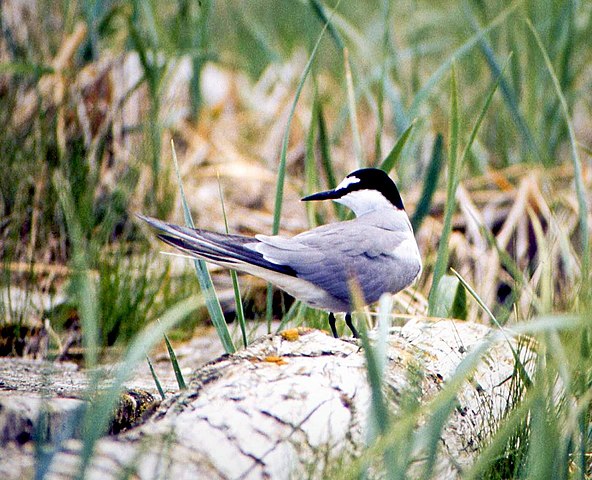
The story of the origin of birds on Easter Island, like many other myths, has a kernel of truth. In addition, it is precisely on Motu Nui, as well as on the nearby islets Motu Iti and Motu Kao Kao, that the vast majority of the seabirds who visit the island opt to nest, according to researchers. Until recently, the manutara, the main character of our story, was also seen nesting on the motu, or the islands. Several tern species have been associated with this species, the most notable of which is the sootie tern, which comes the island every spring to lay eggs. With a black upper part of the head and a white neck and breast, the manutara measures around 40 centimetres in length. The name comes from the dark grey coloration of the top part of the wings and the body of the bird.
Common dolphin
- Scientific Name: Delphinus delphis
- Type of Animal: Mammal
- Diet: Carnivore

The common dolphin is the most common cetacean on the globe, with a global population of over six million individuals. Contrary to what it’s often recognized as and despite its name, the common dolphin is not considered to be the archetypal dolphin; that distinction belongs to the bottlenose dolphin, which is well-known for its appearances in aquariums and on television. However, the common dolphin is regularly depicted in Ancient Greek and Roman art and culture, most notably in a mural created by the Greeks known as the Minoans’ Mural of the Dolphins.
There is now only one member of the genus Delphinus. Known as a common dolphin, it is a member of the Delphinine subfamily, which contains three species of bottlenose dolphins, as well as humpback dolphins, spinner dolphins, Clymene dolphins, Fraser’s dolphin, tucuxi and Guiana dolphins, and striped dolphins. The short-beaked common dolphin and the long-beaked common dolphin were originally considered two distinct species.
Now, however, they are considered one (now understood to represent ecotypes). The latest research, on the other hand, shows that the numerous populations of long-beaked common dolphins found around the world are not closely linked to one another, are often descended from a short-beaked progenitor, and do not necessarily exhibit the same derived characteristics.
Bunnies
- Scientific Name: Oryctolagus cuniculus domesticus
- Type of Animal: Mammals
- Diet: Herbivore

Rabbits, sometimes known as bunnies or bunny rabbits, are small mammals that are members of the order Lagomorpha and the family Leporidae. Rabbits are native to North America and are found across the world. Oryctolagus cuniculus is the genus that encompasses the European rabbit and its ancestors, as well as all 305 domestic rabbit varieties found across the world.
Wild rabbits belong to the genus Sylvilagus, and there are 13 different types of them, including seven different cottontails. The European rabbit, which has been introduced to every continent except Antarctica, is well-known as a wild hunt animal as well as a domesticated livestock and pet all over the world. It is also a popular pet in the United States. In many regions of the world, the rabbit is a staple of everyday life, providing nourishment and clothes, as well as companionship and inspiration for artists and writers, owing to its widespread effect on ecosystems and civilizations.
Varied Egg Fly (Blue Moon butterfly)
- Scientific Name: Hypolimnas bolina
- Type of Animal: Insect
- Diet: Carnivore

It is a nymphalid butterfly that may be found all over the world, from Madagascar to Asia and Australia. In New Zealand, it is known as the Varied Egg fly or the Blue Moon butterfly. Males who are monomorphic do exist. The dorsal wing surface is completely black, but there are three distinct spots on the forewing and hindwing: two on the forewing and one on the hindwing on either side of the dorsal wing surface.
These appear as white patches with blue-violet edges when viewed with the naked eye. There is a white centre with intense UV iridescence, which is created by nanostructures on the wing scale surface, surrounding the iridescence.
Both the fore- and hindwings are spotted with a scattering of little white spots. Its ventral surface is mostly comprised of banded white patterns set against a brownish background, with little evidence of UV iridescence. Females are more diverse than men due to the presence of genetic polymorphism as well as phenotypic flexibility. The dorsal surface of the animal exhibits the highest polymorphism, with white, orange, and blue patterns altering between morphs and across individuals.
Clarke and Sheppard (1975) described a genetic morph known as euploeoides, which is most likely a mimic of one or more members of the genus Euploea, and it is thought to be a result of this. Unlike men, females have ventral wing surfaces that are identical to those of males. Because of phenotypic plasticity, individuals who grow at lower temperatures are more likely to be darker than those who develop at higher temperatures.
Lepidoptera
- Type of Animal: Insect
- Diet: Herbivore

In the Lepidoptera of Easter Island, you’ll find all of the butterflies and moths that have been reported on the island. Butterflies and moths are members of the insect order Lepidoptera, which includes butterflies and moths (both are called lepidopterans). A total of around 180,000 species of Lepidoptera have been described, which are organized into 126 families and 46 superfamilies, and account for approximately 10% of all living creatures on the planet.
As an insect order, it is one of the most well-known and well-known insect orders on the face of the earth. In the Lepidoptera, several varieties of the fundamental body form have evolved in order to gain advantages in terms of lifestyle and dispersion, among other things. In recent years, it has been hypothesized that the order, together with the Hymenoptera, Diptera, and Coleoptera, may include more species than previously thought, and that it is one of the four most speciose orders in the animal kingdom.
Panulirus Pascuensis (Spiny Lobster)
- Scientific Name: Panulirus pascuensis
- Type of Animal: Crustaceans
- Diet: Carnivore

Panulirus pascuensis is a spiny lobster species found in the Pacific Ocean around Easter Island and the Pitcairn Islands. It is also known as the Easter Island lobster. In English, it is referred to as the Easter Island spiny lobster, and in Spanish, it is referred to as the Langosta de Isla de Pascua (Easter Island spiny lobster).
This lobster is caught on a small scale for local consumption on a limited budget. Adults are 15–25 centimeters (6–10 in) in length and have a carapace measuring 6–10 centimeters (2.4–3.9 in) in thickness. Antennal plate with two large spines, which can be seen in front of the carapace, is a feature of this species. Forked antennae on the first set, while long, thick, and spiky antennae on the second set distinguish this creature. Flagella, which are long and thin, are found at the ends of the antennae.
The first four pairs of walking legs are completely devoid of claws. The color of this spiny lobster is dark greenish purple, with light transverse lines on the posterior edges of the abdominal segments on the abdominal segments’ posterior edges. The antennae are the entire same color, and the base of the tail fan has a few pale dots on it. Longitudinal light streaks go down the walking legs, illuminating them.
Randall’s Frogfish
- Scientific Name: Antennarius randalli
- Type of Animal: Fish
- Diet: Carnivore
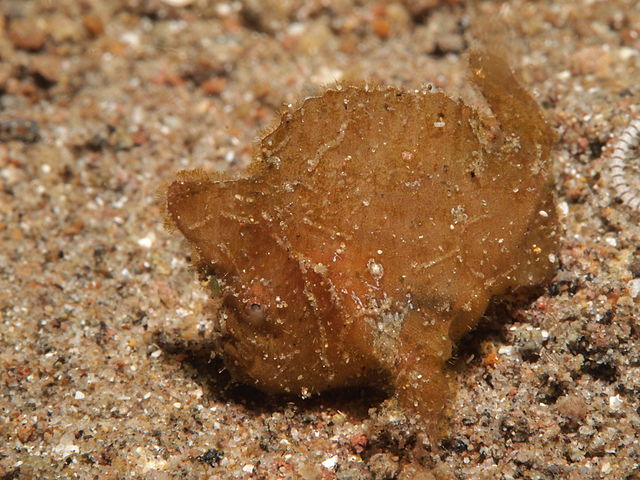
The Randall’s frogfish may be found on Easter Island. The Randall’s frogfish is a species of frogfish that is a member of the Antennariidae family of frogfish. It is the Randall’s frogfish’s pectoral fins, which are huge and claw-like, that provide stability. The colors range from black to white, yellow to brown, and everything in between. It differs from other frogfish in that it has only a few white patterns on its body. It typically conceals itself behind rocks or among marine plants in order to ambush its prey.
Scalemouth Jobfish
- Scientific Name: Parapristipomoides squamimaxillaris
- Type of Animal: Fish
- Diet: Carnivore
Job fish, also known as scale mouth snapper, is a ray-finned snapper that belongs to the Lutjanidae family of marine ray-finned fish. It has a scale mouth and a large mouth. It is indigenous to the Pacific Ocean. This is the only species of the genus that has been identified so far. At its lowest point, the scale mouth job fish has a long, thin body that is roughly a third the length of its normal length.
It has a convex intraorbital area and a relatively small, sharply pointed skull, which distinguishes it from other species. As the lower jaw protrudes slightly, the mouth moves closer to the pupil. The maxilla is scaled, each jaw exhibits a thin band of bristle-like teeth, and the vomer bears a little oval-shaped parch of teeth, all of which are present. The dorsal fin has ten spines and ten soft rays, whereas the anal fin has three spines and eight soft rays. The dorsal fin has ten spines and ten soft rays, and the anal fin has three spines and eight soft rays.
When fully grown, this species may reach a maximum length of 51.4 cm (20.2 in). The prevailing color is a silvery pink that becomes darker as one approaches closer to the back of the vehicle.
Do any animals on Easter Island live longer than humans?
On Easter Island, animals with longer lifespans don’t surpass humans in terms of longevity. While the iconic Moai statues tower over the island, living creatures do not possess extended lifespans like these ancient relics. Humans remain the dominant species with the longest lifespan on this captivating island.
Plectranthias Ahiahiata (The Sunset Perchlet)
- Scientific Name: Plectranthias ahiahiata
- Type of Animal: Fish
- Diet: Carnivore
The sunset perchlet, Plectranthias ahiahiata, is a member of the Serranidae family, subfamily Anthiinae, and is found in the Pacific Northwest. One-theory holds that Rapa Nui (Easter Island), located in the South Pacific, is the species’ sole known habitat. During an exploration of a mesophotic coral ecosystem, the deep diving team from the California Academy of Sciences discovered it at a depth of 90 meters. The term “ahiahiata” comes from the Rapa Nui language and means “the last moments of light before night,” and it was given to this fish because it reminded the scientists who discovered it of the sunsets on Easter Island, which is where the fish was discovered.

